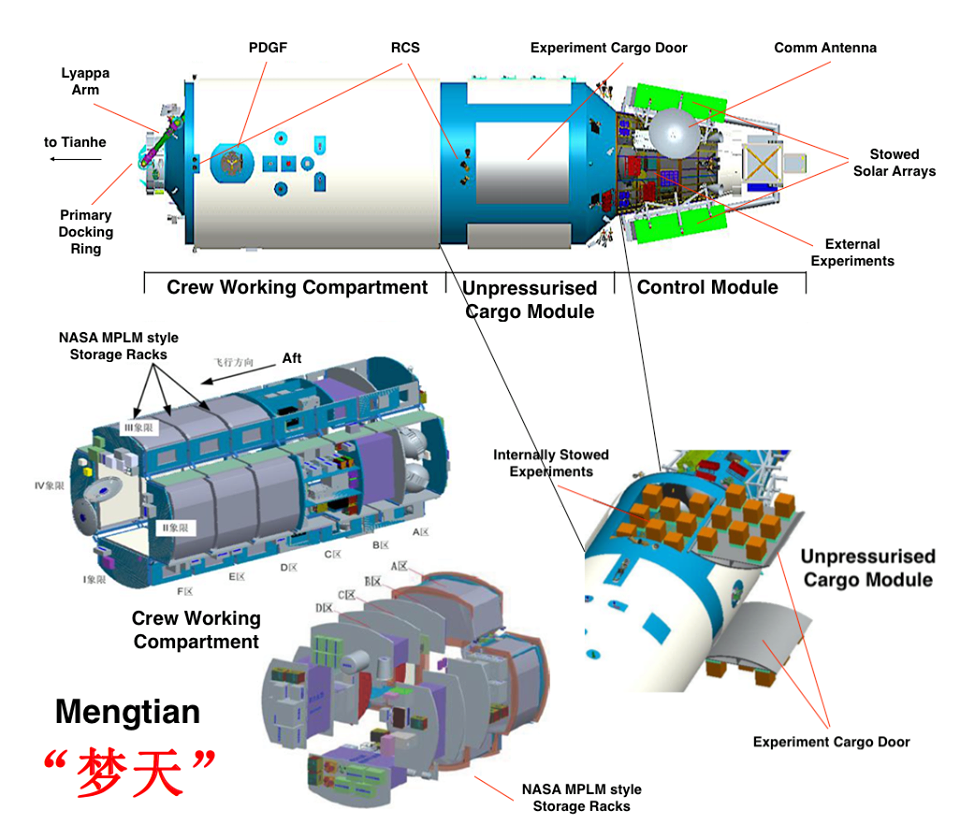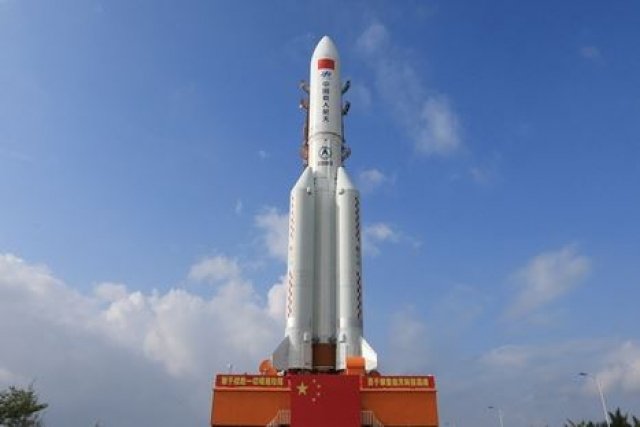Featured image credit: Xinhua News Agency
Launch Window | April 29, 2021 – 03:00-03:40 UTC | 11:00-11:40 BJT |
|---|---|
Mission Name | Tianhe-1, China’s modular space station’s first module |
Launch Provider | China Aerospace Science and Technology Corporation (CASC) |
Customer | China Manned Space Engineering Office (CMSEO) |
Rocket | Long March 5B (CZ-5B) |
Launch Location | LC-1, Wenchang Space Launch Center, Hainan Island, China |
Payload mass | 22,000 kg (49,000 lb) |
Where is the module going? | Low Earth Orbit (LEO) – 370 km (230 mi), at a 41.0° inclination |
Will they be attempting to recover the first stage? | No, this is not a capability of the Long March 5 rocket family |
Where will the first stage land? | The boosters will crash into the South China Sea, well away from any villages |
Will they be attempting to recover the fairings? | No, this is not a capability of the Long March 5 rocket family |
Are these fairings new? | Yes |
How’s the weather looking? | N/A |
This will be the: | – 6th launch of a Long March 5 rocket (any variant) – 2nd launch of a Long March 5B variant – 36th orbital launch attempt for 2021 – 12th orbital launch for China in 2021 |
Where to watch | Official livestream Unofficial livestream |
What does all this mean?
China is launching Tianhe-1, the first module of its modular space station Tiangong, to Low Earth Orbit. The module will go into a circular orbit with 370 km altitude and a 41.0° inclination with respect to the equator. The Tiangong space station is expected to be completed as early as 2022, after a total of 11 launches.
What is Tianhe-1?
Tianhe-1 (meaning “Harmony of the Heavens”) is a module with 16.6 m (54.5 ft) length, and 3.5 m (11.5 ft) diameter external dimensions. Internally, it has a useable volume of approximately 50 m3 (~1800 ft3).
China designed the module to accommodate three crew members with built-in life support. It includes a node on one end that offers 5 docking ports for connections to additional modules and/or visiting spacecrafts.
There are two additional modules that will be added to Tianhe-1 after future launches, building up the Tiangong station to full size. These are the Mengtian (“Dreaming of the Heavens”) and Wentian (“Quest for the Heavens”) modules. When fully constructed, the total habitable volume will be 110 m3 (~3900 ft3).

(Credit: Craigboy under CC BY-SA 3.0, modified by Andy Law for visibility on a dark background under CC BY-SA 3.0)
If all goes to plan, in June 2021, a crewed mission will take 3 crew to the space station. This mission, Shenzhou 12, will dock to the station and the crew will stay on board the station for a several month stint (planned to be 90 days).
The names of the Shenzhou 12 crew have not been announced as of the time of this launch of Tianhe-1.

The first experimental module to be joined to the Tianhe module will be the Wentian module. The second experimentlal module will then be Wengtian.

A fourth module will be launched to the same orbit as the overall Tiangong space station, but it will fly alongside rather than dock. This will be a space telescope, known as Xuntian.
Long March 5B
The Long March 5B has only flown once before, in May 2020. That flight launched a prototype (un-crewed) spacecraft that China intends to use for deep space missions in the future.
The design of Long March 5B is to replace the usual upper stage with heavy modules such as those required to build out a modular space station.
Side boosters
There are 4 side boosters attached to the core stage at lift-off. These are liquid-fueled boosters named CZ-5-300. Each side booster has two YF-100 engines.
At 27.6 m long, and 3.35 m diameter, these are substantial side boosters. Each one has a take-off mass of 156,600 kg (345,200 lb). Of this, 142,800 kg (314,800 lb) is propellant. The side boosters run on refined kerosene (RP-1) and liquid oxygen (LOX).
At sea level, each booster has a thrust of 2,400 kN (540,000 lbf). When in vacuum, this increases to 2,680 kN ( 600,000 lbf).
The combined thrust of the side boosters is 9,600 kN (2,200,000 lbf). They burn for a total time of 173 seconds before stage separation.

Core stage
The core stage is named CZ-5-500 and has two YF-77 engines. The stage is 33.16 m (108.8 ft) tall and has a 5 m (16 ft) diameter. At lift-off, its total mass is 186,900 kg (412,000 lb).
The engines run on liquid hydrogen (LH2) and liquid oxygen (LOX). The stage has a thrust at sea level of 1,020 kN (230,000 lbf). When in vacuum, this increases to 1,400 kN (310,000 lbf).
The burn time of the core stage is 492 seconds, or 8 minutes 12 seconds.
Upper Stage
The Long March 5B does not have an upper stage!





The cover photo is a Long March 5 not 5B. The launch mass is 22.5t. Module would operate in 200*400 42 degree orbit, although the initial orbit is unclear as the need for first stage reentry(last time is 160). This will be the 7th launch of Long March 5 series(5 Long March 5 and this is the second Long March 5B)
Hey, thanks for the info. About the featured image, we know it’s not a 5B, but unfortunately it’s pretty difficult to find high res pictures of it and the difference between a 5 and a 5B is not that big, which is why we went with a picture of a 5
Why is the core stage burning H2 while the boosters burn Kerosene? It seems logical to use only 1 propellant
you can just look the LM5B as a space shuttle, a SSTO LV, core stage burning LH2, and side boosters burning RP1 instead of shuttle`s SRB
Kerosene engines are more powerful than LH2 engines, but are less efficient. The side boosters are used to punch through the thick atmosphere, and the core stage is designed to work for a long period and produce more overall delta v.
Actually a lot of rockets follow the “strong booster, efficient core” philosophy, like the space shuttle, SLS, Ariane 5, and H2.
Is this (5B) the only type of rocket where there is no separate second stage (in order to achieve larger payloads)?